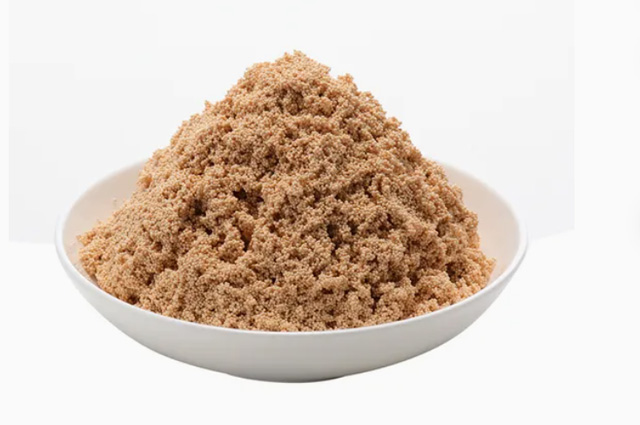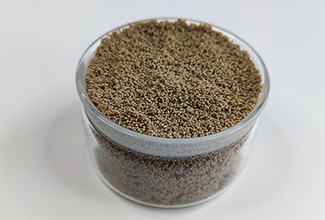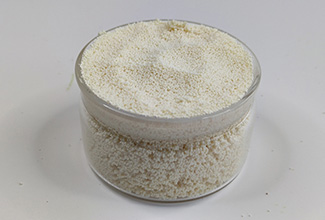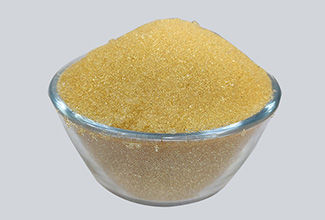A Guide to the Application of Uranium Removal Resins in Uranium Extraction from Mines
1. Transformation in Uranium Extraction Technology and the Path to a Breakthrough with Uranium Removal Resins
1.1 Background on the Growth of Global Uranium Demand
Amid the global trend toward a clean, low-carbon energy structure, demand for nuclear energy, a stable and reliable low-carbon energy source, continues to rise. According to the International Energy Agency, global nuclear power capacity will increase by over 50% over the next 20 years. As the core fuel of nuclear power, market demand for uranium is also entering a period of rapid growth.
At the same time, the gradual replacement of traditional fossil fuels and the expansion of nuclear power capacity in emerging countries have further exacerbated the supply and demand imbalance of uranium resources, driving the uranium extraction industry to continuously explore more efficient and environmentally friendly uranium extraction technologies.
1.2 Limitations and Challenges of Traditional Uranium Extraction Processes from Mines
Currently, traditional uranium extraction processes primarily include precipitation and solvent extraction, but these methods face numerous bottlenecks in practical application. For low-grade uranium ores (uranium content below 0.1%), traditional extraction processes suffer from low efficiency and high costs, making economic development difficult. Furthermore, impurity ions (such as iron, calcium, and magnesium ions) in complex ores can interfere with the uranium separation process, resulting in reduced product purity.
Furthermore, increasingly stringent environmental regulations pose challenges to traditional processes. Traditional processes often produce large amounts of uranium-containing wastewater and waste residues. If improperly handled, they can easily cause radioactive contamination and fail to meet the requirements of green mine development.
1.3 The Application Value of Uranium Removal Resins Highlighted
Against this backdrop, uranium removal resins, with their unique technological advantages, have become a key breakthrough in the uranium extraction industry. They can specifically address the pain points of traditional processes, enabling the economic development of low-grade uranium ores and the efficient separation of uranium from complex systems while reducing environmental pollution, providing key technical support for the sustainable development of the uranium extraction industry.
2. What is Uranium Removal Resin?

2.1 Definition and Classification of Uranium Removal Resins
Uranium removal resins are a specialized branch of ion exchange resins, specifically designed to selectively adsorb uranium ions (primarily UO₂²⁺) from solutions. Based on the functional groups, uranium removal resins can be categorized as chelating resins (containing groups such as aminophosphonic acid and amidoxime) and ion exchange resins (containing groups such as sulfonic acid and quaternary ammonium salts). Chelating resins are the most widely used in uranium extraction from mines due to their stronger specific binding ability for uranium ions.
2.2 Basic Working Principle of Uranium Removal Resins
The core working principle of uranium removal resins is ion exchange or chelation. Functional groups on the resin matrix (usually styrene-divinylbenzene copolymer) specifically bind to UO₂²⁺ in solution:
Chelating resins: Groups such as aminophosphonic acid form stable chelates with UO₂²⁺ through coordination bonds, achieving selective adsorption of uranium ions.
Ion exchange resins: Through charge interactions, exchangeable ions (such as H⁺ and Cl⁻) on the resin exchange with UO₂²⁺, securing uranium ions on the resin. When the resin reaches saturation, uranium ions can be eluted using a specific desorbent (such as nitric acid or sulfuric acid solution), allowing the resin to be regenerated and recycled.
2.3 Core Technical Features of Uranium Removal Resins
Uranium removal resins offer three core advantages: First, they are highly selective, preferentially adsorbing uranium ions in complex solution systems without interference from impurity ions, achieving a uranium adsorption rate exceeding 99%. Second, they are regenerable, with a single-use regeneration rate exceeding 95%, allowing for 50-100 cycles of use, significantly reducing operating costs. Third, they are simple to operate, requiring no complex equipment and easily integrating with existing mining processes, adapting to uranium extraction scenarios of varying scales.
3. Core Applications of Uranium Removal Resins in Uranium Extraction from Mines
3.1 Uranium Adsorption in Acid/Alkaline Leaching Solutions
Overview of Ore Leaching Processes
The first step in uranium extraction from mines is ore leaching. Depending on the properties of the ore, leaching is divided into acid leaching and alkaline leaching. Acid leaching is suitable for acidic ores, using a sulfuric acid solution to dissolve the uranium; alkaline leaching is suitable for alkaline ores, using a sodium carbonate-sodium bicarbonate solution to extract the uranium, ultimately producing a leachate containing uranium at a concentration of 0.1-1 g/L.
Adsorption of Resins in Complex Systems
In addition to UO₂²⁺, the leachate also contains a large number of impurity ions such as Fe³⁺, Ca²⁺, and Mg²⁺. Uranium removal resins, through the specific binding of their functional groups, selectively adsorb only uranium ions, ignoring impurity ions. The adsorption capacity can reach 10-20 g U/kg resin, effectively solving the problem of impurity interference in traditional processes.
Advantages Compared to Traditional Methods
Compared to precipitation methods (susceptible to pH changes and high uranium loss) and solvent extraction methods (requiring the use of toxic organic extractants and prone to secondary contamination), uranium removal resins offer superior performance in leachate adsorption: uranium recovery rates are increased by 10%-15%, organic pollutant emissions are eliminated, and equipment investment costs are reduced by over 20%.
3.2 Economic Utilization of Low-Grade Uranium Ore
The Development Dilemma of Low-Grade Uranium Ore
Low-grade uranium ores (uranium content 0.01%-0.1%) account for over 60% of the world's proven uranium deposits. However, the high extraction costs of traditional processes (over $80 per pound of U₃O₈) hinder commercial development, resulting in significant unused uranium resources.
Resin's Capacity for Low-Concentration Uranium Capture
Uranium removal resins are highly efficient at capturing low-concentration uranium ions (0.05-0.5 g/L), maintaining an adsorption rate exceeding 95% even in leachates with extremely low uranium concentrations. Through resin adsorption, the cost of uranium extraction from low-grade ores can be reduced to $50-60 per pound of U₃O₈, making it economically viable for development.
Practical Application Cases
At a low-grade uranium mine project in Australia, the use of a chelating uranium removal resin increased uranium recovery from 65% using conventional processes to 82%, shortening the project's payback period by two years and successfully enabling the large-scale development of low-grade uranium ores. This serves as a reference for similar mines worldwide.
3.3 Application in In-Situ Leaching (ISR) Process
Core Principles of the ISR Process
In-situ leaching (ISR) is a "mining-free" uranium extraction process. It involves injecting a leachate (acid or alkaline solution) into an underground uranium ore layer to dissolve the uranium in the ore body, forming a uranium-containing solution. This solution is then pumped to the surface for uranium extraction. This process requires no excavation and causes minimal damage to the surface ecosystem.
Resin Circulation Process in ISR
Uranium removal resin is the core equipment in the ISR process:
Adsorption Phase: The uranium-containing solution (uranium concentration 0.1-0.8 g/L) extracted from the surface enters the resin column, where uranium ions are adsorbed by the resin.
Desorption Phase: The uranium on the resin is eluted with a 10%-15% nitric acid solution, resulting in a uranium-enriched solution (uranium concentration 5-10 g/L).
Regeneration Phase: The desorbed resin is rinsed with clean water and then re-entered into the adsorption cycle for continuous operation.
Comprehensive Advantages of the ISR Process
Compared to traditional open-pit mining, the ISR process, combined with uranium resin removal, reduces investment costs by 30%-40%, water consumption by 50%, and surface vegetation restoration rates exceeding 90%. It also avoids the generation of radioactive waste, making it one of the most environmentally friendly uranium extraction processes currently available.
3.4 Industrial Application of Resin Towers
Resin Tower Process Design
Industrial mines typically utilize a multi-tower resin tower system in series. The process is as follows:
After pretreatment (filtering impurities), the leachate is pumped into the first-stage resin tower for initial uranium adsorption.
The incompletely adsorbed solution enters the second and third-stage resin towers for deep uranium adsorption.
The saturated resin tower switches to desorption mode, while the remaining towers continue adsorption, ensuring continuous production.
Advantages of Continuity and Automation
The resin tower system can be fully automated using a PLC control system. It monitors parameters such as solution flow rate, uranium concentration, and resin saturation in real time, automatically switching between adsorption and desorption modes without manual intervention. A single resin tower system can process up to 5,000-10,000 cubic meters of leachate per day, making it suitable for industrial production in large-scale mines.
3.5 Uranium Concentrate and Yellowcake Production
Preparation of Uranium-Enriched Solution
The uranium-enriched solution (uranium concentration 5-10 g/L) obtained by resin desorption must be converted into yellowcake (U₃O₈) through precipitation. First, ammonia or sodium hydroxide is added to the uranium-enriched solution to adjust the pH to 7-8, causing the uranium ions to precipitate as ammonium diuranate ((NH₄)₂U₂O₇).
Purification and Drying of Yellowcake
The precipitated ammonium diuranate is filtered and washed to remove impurities, then calcined at 500-600°C to decompose into U₃O₈ (yellowcake). Because the uranium removal resin has already removed most impurities, the yellowcake purity can reach 95%-98%, meeting the requirements of subsequent uranium conversion processes without the need for additional purification steps.
3.6 Environmental Protection and Wastewater Treatment
Uranium Recovery from Tailings and Wastewater
Tailings and ore-washing wastewater generated during uranium extraction in mines still contain residual uranium at levels of 0.01-0.05 g/L. Direct discharge can cause radioactive contamination. Treating this wastewater with uranium removal resins can reduce uranium concentrations to below 0.001 g/L while recovering residual uranium and improving resource utilization.
Compliance with Environmental Regulations
Currently, major mining countries worldwide (such as China, the United States, and Australia) have established strict standards for the discharge of uranium-containing wastewater, requiring uranium concentrations to be below 0.005 g/L. Wastewater treated with uranium removal resins can be discharged directly to meet these standards or reused in the leaching process, achieving water recycling and helping mines meet environmental compliance requirements and avoid the risk of fines.
4. Economic Efficiency and Sustainable Development Value
4.1 Resin Cost and Return on Investment Analysis
System Core Components
A medium-sized (5,000 cubic meters of leachate per day) uranium removal resin system consists of four core modules: Highly selective chelating resins are used in the resin procurement process, whose specialized functional groups precisely adsorb uranium ions; the resin towers feature a modular design, supporting multi-stage series or parallel operation to ensure continuous and stable operation; the control system integrates PLC automation devices, enabling real-time monitoring and control of parameters such as resin regeneration and liquid flow rate; and the installation process includes key technologies such as pipeline layout optimization and leak prevention to ensure the entire system meets the stringent requirements of mining environments. Compared to solvent extraction processes, uranium removal resin systems significantly reduce equipment complexity and footprint by simplifying the process flow.
Return on Investment Calculation
Assuming a uranium price of $60 per pound of U₃O₈ and a 12% increase in uranium recovery, a mine producing 1,000 tons of U₃O₈ annually would generate approximately 8-10 million RMB in additional annual revenue from the use of uranium removal resins. The payback period is only 3-4 months, representing significant economic benefits.
4.2 Resin Lifespan and Operating Cost Control
Resin Lifespan and Regeneration Cost
The lifespan of uranium removal resins is affected by the number of regenerations. Conventional chelating resins can be regenerated 50-80 times, with a single regeneration cost (desorbent, utilities) of approximately 0.5-1 RMB per liter of resin. Assuming 10 regenerations per year, the annual operating cost per ton of resin is approximately 10,000-20,000 RMB, significantly lower than the cost of regular resin replacement (purchase price of 80,000-100,000 RMB per ton).
Operating Cost Optimization Strategies
By optimizing the regeneration process (such as adjusting desorbent concentration and temperature), the resin lifespan can be further extended to over 100 cycles. Furthermore, recycling the desorbed wastewater in the leaching process reduces desorbent consumption and lowers operating costs by approximately 30%.
4.3 Supporting Value in Green Mine Construction
The use of uranium removal resins can help mines achieve "three reductions and one improvement": reducing radioactive waste generation (by over 80%), reducing water consumption (by increasing the recycling rate to 70%), and reducing chemical pollutant emissions (by eliminating the use of organic extractants), thereby improving the mine's environmental rating.
Amid the current global trend of "green transformation" in the mining industry, mines employing uranium removal resin technology are more likely to obtain government environmental impact assessment approvals and green credit support, while also enhancing their brand image and market competitiveness.
5. Future Development Trends
5.1 Research and Development of Highly Selective, Composite Uranium Removal Resins
In the future, uranium removal resins will develop towards "higher selectivity and wider adaptability." On the one hand, molecular design can be used to introduce more specific functional groups (such as bidentate amidoxime groups) onto the resin to further enhance uranium ion selectivity and reduce interference from impurity ions. On the other hand, the development of composite resins (such as ion exchange-chelation bifunctional resins) allows them to not only adsorb uranium but also simultaneously remove heavy metal impurities such as arsenic and cadmium, adapting to more complex ore systems.
5.2 Combining Nanomaterials with Novel Adsorbents
Nanomaterials, due to their large surface area and high adsorption activity, have become an important modification direction for uranium removal resins. Current research hotspots include nano-titanium dioxide-loaded resins (increasing uranium adsorption capacity to over 30 g U/kg resin) and carbon nanotube composite resins (accelerating adsorption rates and reducing equilibrium times to less than 30 minutes).
In addition, the combined application of biosorbents (such as modified algae and bacterial cellulose) with uranium removal resins has the potential to achieve "low-cost, environmentally friendly" uranium extraction, becoming a key future research and development direction.
5.3 Application Prospects of the Global Uranium Extraction Market
According to the Global Uranium Market Report, global uranium demand is projected to reach 80,000 tons/year by 2030, while current production capacity is only 60,000 tons/year. This supply-demand gap will drive the accelerated expansion of the uranium extraction industry. As a core technology, the market size of uranium removal resin is expected to grow from 500 million yuan in 2023 to 1.5 billion yuan in 2030, with a compound annual growth rate exceeding 15%.
From a regional perspective, emerging uranium mining projects in Central Asia (Kazakhstan and Uzbekistan) and Africa (Namibia and Niger), as well as low-grade uranium mine development in China, will be the primary demand markets for uranium removal resin.
6. Conclusion
6.1 Summary of the Core Value of Uranium Removal Resins
Uranium removal resins have become an indispensable key technology in the uranium extraction industry. Their core value is reflected in three aspects:
Improving uranium recovery: Whether it is low-grade uranium ore or complex leachate, uranium recovery can be increased by 10%-15%, maximizing resource utilization;
Reducing operating costs: Through regeneration and equipment simplification, uranium extraction costs can be reduced by 20%-30%, shortening the payback period;
Ensuring environmental compliance: Reducing radioactive contamination and achieving water resource recycling help mines meet stringent environmental regulations and support green mine construction.
6.2 Outlook for Future Industry Status
With the growth of global nuclear energy demand, the advancement of low-grade uranium ore development, and the popularization of environmentally friendly processes such as ISR, the application scenarios of uranium removal resins will continue to expand, extending from traditional mines to emerging uranium projects and radioactive wastewater treatment, becoming a core supporting technology for the "efficient, economical, and environmentally friendly" development of the uranium extraction industry.
6.3 Cooperation and Further Understanding
If your mine is facing issues such as low uranium recovery, high costs, and substandard environmental protection, or would like to learn more about uranium removal resin selection, process integration, and cost calculation, please contact us. We can provide customized uranium removal resin solutions, on-site testing services, and technical training to help your mine achieve efficient and sustainable development.
-
 D001macroporous cation ion exchange resinAppearance: Light brown opaque spherical particles.Ionic form:Na+Volume complete exchange capacity(mmol/ml): ≥1.80
D001macroporous cation ion exchange resinAppearance: Light brown opaque spherical particles.Ionic form:Na+Volume complete exchange capacity(mmol/ml): ≥1.80 -
 D113 Weakly Acidic Polyacrylic Cation Exchange ResinAppearance: Milky white or pale yellow opaque particles.The degree of crosslinking : 7%.Ionic form:H+
D113 Weakly Acidic Polyacrylic Cation Exchange ResinAppearance: Milky white or pale yellow opaque particles.The degree of crosslinking : 7%.Ionic form:H+ -
 001X8 water softener ion exchange ResinIonic form:Na+Appearance: Claybank to tan transparent spherical particle.The degree of crosslinking : 8%.
001X8 water softener ion exchange ResinIonic form:Na+Appearance: Claybank to tan transparent spherical particle.The degree of crosslinking : 8%.

